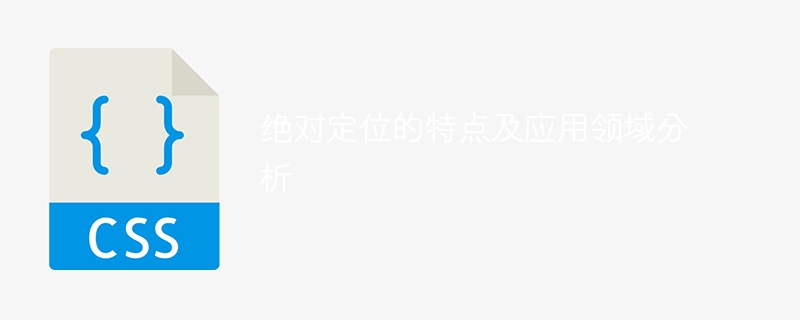

Analysis of the characteristics and application areas of absolute positioning - providing code examples
Absolute positioning is a commonly used positioning method in CSS, which allows elements to be positioned relative to other elements. Positioned to the nearest parent element with a positioning attribute, or positioned relative to the entire document. In this article, we'll explore the characteristics and application areas of absolute positioning, and provide some concrete code examples.
Characteristics of absolute positioning:
Application fields of absolute positioning:
Code sample:
HTML structure:
<div class="container">
<button id="trigger">点击触发弹出菜单</button>
<ul class="menu" id="menu">
<li>菜单项1</li>
<li>菜单项2</li>
<li>菜单项3</li>
</ul>
</div>CSS style:
.container {
position: relative;
}
.menu {
display: none;
position: absolute;
top: 30px;
left: 0;
background: #fff;
border: 1px solid #ccc;
padding: 10px;
}
.menu li {
list-style: none;
}JavaScript code:
var trigger = document.getElementById('trigger');
var menu = document.getElementById('menu');
trigger.addEventListener('click', function() {
if (menu.style.display === 'block') {
menu.style.display = 'none';
} else {
menu.style.display = 'block';
}
});above In the code example, we use absolute positioning to position the menu element relative to the trigger button. When the trigger button is clicked, the menu can be displayed and hidden by adding or removing the display attribute of the menu element. This is a common way to implement pop-up menus.
Summary:
Absolute positioning has the characteristics of positioning relative to the reference object, breaking away from the document flow, positioning using the top, right, bottom, left attributes, and cascading control through the z-index attribute. . It is widely used in pop-up menus, dialog boxes and other application fields. Through the above code examples, we can better understand the practical application of absolute positioning.
The above is the detailed content of Analysis of the characteristics of absolute positioning and its application fields. For more information, please follow other related articles on the PHP Chinese website!
 What are the main characteristics of computers?
What are the main characteristics of computers?
 What are the application areas of mongodb?
What are the application areas of mongodb?
 mybatis first level cache and second level cache
mybatis first level cache and second level cache
 What does margin mean in css
What does margin mean in css
 Introduction to welding method types
Introduction to welding method types
 windows cannot open add printer
windows cannot open add printer
 Why can't the QQ space web page be opened?
Why can't the QQ space web page be opened?
 Five reasons why your computer won't turn on
Five reasons why your computer won't turn on
 What are artificial intelligence technologies?
What are artificial intelligence technologies?




